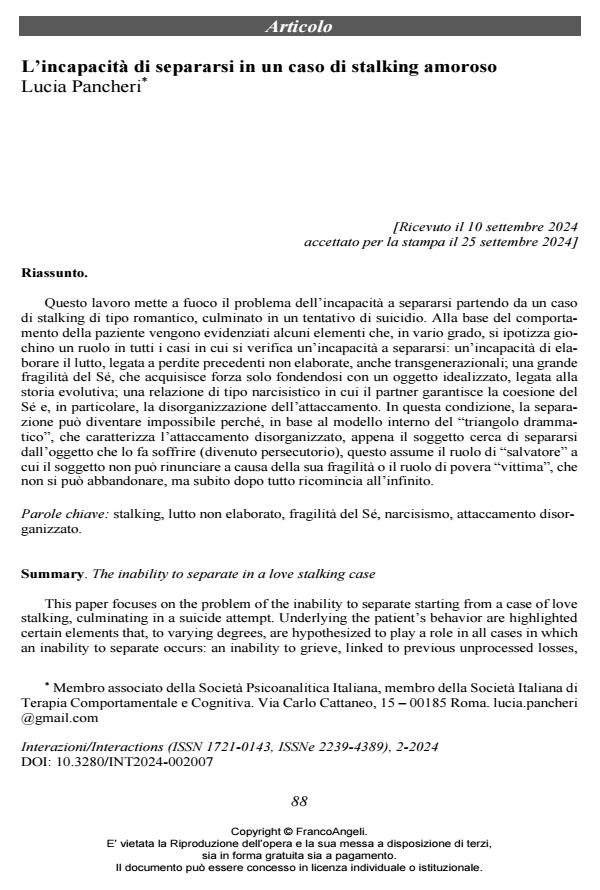The inability to separate in a love stalking case
Journal title INTERAZIONI
Author/s Lucia Pancheri
Publishing Year 2024 Issue 2024/2
Language Italian Pages 17 P. 88-104 File size 244 KB
DOI 10.3280/INT2024-002007
DOI is like a bar code for intellectual property: to have more infomation
click here
Below, you can see the article first page
If you want to buy this article in PDF format, you can do it, following the instructions to buy download credits

FrancoAngeli is member of Publishers International Linking Association, Inc (PILA), a not-for-profit association which run the CrossRef service enabling links to and from online scholarly content.
This paper focuses on the problem of the inability to separate starting from a case of love stalking, culminating in a suicide attempt. Underlying the patient’s behavior are highlighted certain elements that, to varying degrees, are hypothesized to play a role in all cases in which an inability to separate occurs: an inability to grieve, linked to previous unprocessed losses, including transgenerational ones; a great fragility of the self, which acquires strength only by merging with an idealized object, linked to developmental history; a narcissistic type of rela-tionship in which the partner ensures the cohesion of the self and in particular the disorganiza-tion of attachment. In this condition, separation can become impossible because, according to the internal model of the “dramatic triangle”, which characterizes disorganized attachment, as soon as the subject tries to separate from the object that causes him to suffer (which has be-come persecutory), she/he takes on the role of “savior” that the subject cannot give up because of his fragility or the role of poor “victim”, who cannot be abandoned, but immediately after-wards everything starts over again endlessly.
Keywords: stalking, non-elaborate grief, fragility of the Self, narcissism, disorganized attachment.
Lucia Pancheri, L’incapacità di separarsi in un caso di stalking amoroso in "INTERAZIONI" 2/2024, pp 88-104, DOI: 10.3280/INT2024-002007